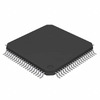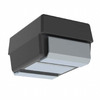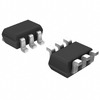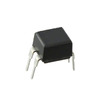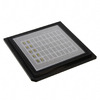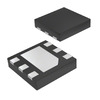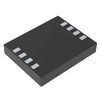Comprehensive Guide to the L297 Stepper Motor Controller
When it comes to modern automation and precision control, stepper motor drivers play a basic role in transforming electrical control signals into precise mechanical movements. These drivers act as the suitable bridge between stepper motors and control systems like PLCs or microcontrollers, making them basic for applications demanding accuracy, such as CNC machines, 3D printers, and robotics. This article explores into the functionality of stepper motor drivers, the popular L297 controller, and examine the main alternative components. It also discuss their applications in various industries, shedding light on the importance of meticulous control in achieving reliable, repeatable motor movements.
Catalog
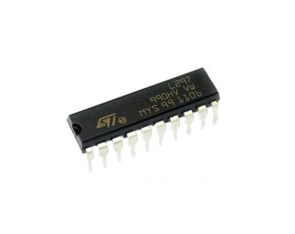
Comprehending and Delving into a Stepper Motor Driver
A stepper motor driver functions as an intricate power amplifier crafted to manage the operation of a stepper motor. It serves to bridge control systems such as PLCs or microcontrollers by transforming signal inputs into precise, controlled mechanical movements. Upon receiving a pulse, the rotor of a stepper motor moves by a defined angle, demonstrating a clear connection between angular or linear movements and the number of pulses received. The motor’s speed corresponds directly to pulse frequency, indicating its role similar to a specialized pulse motor.
Stepper motor drivers interface with various control frameworks, converting digital signals into directed motor actions with finely tuned power modulation. Each pulse translates into an angular shift. In practical scenarios, such as industrial automation, this precision ensures machinery runs effortlessly, minimizes wear, and sustains operational efficiency over time. Users, drawing from past experiences, often leverage specific parameters to optimize performance, adjusting systems to diverse conditions.
The capacity for precise movement control makes stepper motors wanted in domains demanding meticulous accuracy—like robotics and CNC machinery. By fine-tuning pulse frequency and count, desired speed and position are achieved with astounding repeatability. In executing intricate designs or delicate tasks, practitioners depend suggestively on the motor’s reliability and, the importance of the harmony between technology and skill.
L297 Controller In-Depth Exploration
The L297 , crafted by SGS Semiconductor, is engineered for task-oriented control of stepper motors, optimizing motor operations through exact external components. Integrating both logic and power output circuits, it generates 4-phase control signals compatible with bi-phase bipolar and 4-phase single-phase motors. Users have the flexibility to adjust the control strategy with single four-beat, double four-beat, or four-phase eight-beat methods, catering to varied application needs. The versatility of the L297 makes it appealing in automation and robotics, where precise motor alignment is a must.
Alternative Solutions
- A4988
- DRV8711
- L298
- L6208
- TB6600
Characteristics of the L297 Controller
Safety Strategies
The L297 controller integrates comprehensive safety mechanisms, incorporating measures against over-current and overheating. These attributes serve to protect motors from potential harm, fostering enhanced durability and potentially lowering maintenance expenditures. Specifically, the over-current protection mitigates unforeseen electrical surges by halting current flow—a method frequently applied in industrial environments to avert hardware malfunctions.
Directional Oversight and Driving Techniques
This controller amplifies motor management through accurate directional control. It accommodates multiple driving techniques. These strategies enable precise adjustments in performance and energy usage, making them suitable for a spectrum of applications, from robotics to precision equipment. For instance, micro-stepping often contributes to smoother motor functionality and finer resolution.
- Full-stepping
- Half-stepping
- Micro-stepping
Integrated PWM Chopper Circuitry
An incorporated PWM (Pulse Width Modulation) chopper circuit plays a major role in the adept management of current within motor windings. This functionality aids in regulating motor power and bolstering operational steadiness. PWM choppers find extensive application in scenarios demanding meticulous supervision of motor speed and torque, highlighting their relevance in the evolution of technological innovations.
Built-in Current Detection Circuitry
The L297’s integrated current detection circuitry offers an extra layer of surveillance to assure motor protection. By guarding against overloads, it helps maintain the motor within secure operational bounds, promoting system efficiency. This feature can be likened to automotive monitoring systems that consistently evaluate engine performance, ensuring optimal outcomes while minimizing damage risks.
L297 Pin Configuration

The L297 features 20 distinct pins, each contributing uniquely to the exact control of stepper motors. These pins facilitate various operations such as chopper output synchronization, ground connectivity, and phase drive signals (A, B, C, D), alongside control inputs that enable and reset the system. Engaging with external signals like clock inputs and directional controls, these pins jointly orchestrate seamless and efficient motor operation.
Exploring the distinct functions of each pin helps unlock the full potential of stepper motors. These roles support synchronization and connectivity, enhancing precise motor control. In practical applications, mostly in sensitive equipment like medical devices and industrial automation, these configurations profoundly affect operational success and efficiency.
Synchronization and Control
Chopper output synchronization pins help maintain harmony in stepper motor operations. They regulate current levels to prevent overheating and excessive power use, thus prolonging motor life and boosting overall system resilience. Thoughtful integration of these elements can address common operational challenges.
Drive Signals and System Coordination
Drive signals across four phases (A, B, C, D) are active for orchestrated movement. They govern electromagnetic fields, ensuring smooth phase shifts. Examples show that accurate phase management results in heightened motor precision, prized in high-demand fields like robotics and automated manufacturing.
Control Inputs: Enabling and Resetting
Control inputs responsible for enabling and resetting the system offer operational flexibility and safety. They facilitate quick start-ups and shutdowns, protecting the motor from sudden failures and allowing straightforward maintenance. Such adaptability is treasured in dynamic environments requiring swift responses to changing conditions.
Integration and Application
Integrating the L297 with external signals, including clock inputs and directional controls, provides a holistic approach to motor management. Leveraging these interactions enhances precision and allows adaptation across varied applications. The intricate task of aligning these components demands a deep dive into hardware and software interfaces, stressing meticulous design and execution in settings.
L297 Structure and Operation
Internal Mechanics
The L297 encompasses an integrated counter, resembling a shift register, synchronized with the clock input. This synchronization tailors the phase adjustment to the motor’s position. Within its framework, it houses capacitors and transistors. These elements act as guardians of precise function and reliability, drawing on stored calibration data. This harmonious integration allows the L297 to manage energy wisely and maintain stability over time, lending itself to applications where consistent performance unfolds naturally.
Operational Mechanics
The L297 operates by guiding specific motor phases with precise signals driven by external systems. This effective regulation of internal circuits ensures accurate motor positioning and effortless phase transitions. The system promotes not just smooth operation but also heightened performance in ever-changing environments. The L297's design gracefully adapts to different loads and speeds, accommodating a spectrum of practical applications. This understanding may enrich one’s ability to adeptly implement and maneuver these systems within complex technological landscapes.
L297 Stepper Motor Controller Specifications
|
Product Attribute |
Attribute Value |
|
Manufacturer |
STMicroelectronics |
|
Package
/ Case |
PDIP |
|
Length |
25.4
mm |
|
Width |
7.1
mm |
|
Height |
2.68
mm |
|
RoHS |
Compliant |
|
Supply
Voltage |
4.75
V ~ 7 V |
|
Operating
Temperature |
-40°C
~ 150°C |
|
Mounting
Style |
Through
Hole |
|
Pin
Count |
20 |
Applications of the L297 Controller
Precision Instruments
The L297 enhances precision instruments by enabling exact adjustments used for superior performance across diverse sectors. In semiconductor fabrication, it facilitates micro-level precision, achieved through thoughtful design and hands-on tuning via iterative testing and calibration. This ensures devices operate with unparalleled accuracy, reflecting the patience and dedication of those who fine-tune them.
CNC Machine Tools
In CNC machine tools, the controller governs precise tool movements, seamlessly interpreting complex commands for intricate designs. Professional machinists utilize this precision to craft complex geometries, illustrating a harmonious blend of digital control with expert craftsmanship in today's manufacturing world.
Office Devices
Within office devices like printers and scanners, the L297 manages paper and head movements with precision. This coordination is the result of a delicate balance between design goals and demanding operational realities, refined through rigorous testing scenarios that cater to end-user expectations.
Medical Equipment
The L297's precision is basic in medical diagnostics. Integrated into surgical robots, it allows for the exactitude desired in procedures where even a millimeter's deviation can be profound. This mirrors the technological strides in healthcare, where careful control systems aid in achieving better patient outcomes.
Automation Systems
In automation systems, the L297 brings noticeable improvements in assembly line management. Its precision minimizes downtime and elevates productivity. Actual applications, mainly in automotive production lines, unveil how aligning technology with practical needs fosters substantial production advancements.
Telescopes and Astronomical Gear
For telescopes and astronomical equipment, the L297 ensures meticulous motor operations required for celestial tracking. Its integration allows for enhanced observations and studies of astronomical phenomena, aiding scientific discoveries through its steadfast control, thus deepening our cosmic understanding.
Frequently Asked Questions [FAQ]
1. What is L297?
The L297 serves as a sophisticated controller for both bipolar and unipolar stepper motors. When paired with dual bridge drivers like the L298N, it enables detailed motor management. This collaboration ensures accurate motor performance, making it suitable for fields such as robotics and CNC machining. By effectively handling intricate motor tasks, it supports smoother operations and boosts efficiency.
2. What is the relationship between the L297 and the L298?
The L298 operates as a dual full-bridge driver, forming a powerful alliance with the L297 for extensive stepper motor control. This combination provides adaptable motor management solutions, proving beneficial in both industrial and hobbyist settings. Their integration enhances power efficiency and offers improved precision, showing their role in the progression of automated technologies.
3. How does motor driver work?
Motor drivers enhance low-power signals from microcontrollers, amplifying them to provide the energy required for motor operations. This amplification facilitates seamless motor activity across various applications, from simple devices to intricate systems. Adjusting power output according to motor needs plays a substantial role in maintaining peak performance and extending motor lifespan.
4. How does the L297 work with stepper motors?
The L297 transforms step and direction inputs into useful waveforms, synchronizing signals for precise motor control. This alignment is used for tasks demanding accurate positioning and speed management. Advances in this domain emphasize the pursuit of precision and efficiency, as signal conversion plays a major role in achieving fluid motor transitions and enhanced operational potential.
About us
ALLELCO LIMITED
Read more
Quick inquiry
Please send an inquiry, we will respond immediately.

Understanding the Features and Functions of the TJA1043 CAN Transceiver
on September 26th
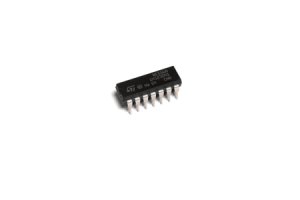
NE556 Dual Bipolar Timer: Structure and Working Principle
on September 26th
Popular Posts
-

What is GND in the circuit?
on January 1th 3271
-

RJ-45 Connector Guide: RJ-45 Connector Color Codes, Wiring Schemes, R-J45 Applications, RJ-45 Datasheets
on January 1th 2815
-

Understanding Power Supply Voltages in Electronics VCC, VDD, VEE, VSS, and GND
on November 20th 2635
-

Fiber Connector Types: SC Vs LC And LC Vs MTP
on January 1th 2265
-

Comparison Between DB9 and RS232
on January 1th 1882
-

What Is An LR44 Battery?
Electricity, that ubiquitous force, quietly permeates every aspect of our daily lives, from trivial gadgets to life-threatening medical equipment, it plays a silent role. However, truly grasping this energy, especially how to store and efficiently output it, is no easy task. It is against this background that this article will focus on a type of coin cell battery that may seem insignificant on the...on January 1th 1846
-

Understanding the Fundamentals:Inductance Resistance, andCapacitance
In the intricate dance of electrical engineering, a trio of fundamental elements takes center stage: inductance, resistance, and capacitance. Each bears unique traits that dictate the dynamic rhythms of electronic circuits. Here, we embark on a journey to decipher the complexities of these components, to uncover their distinct roles and practical uses within the vast electrical orchestra. Inductan...on January 1th 1806
-

What Is RF and Why Do We Use It?
Radio Frequency (RF) technology is a key part of modern wireless communication, enabling data transmission over long distances without physical connections. This article delves into the basics of RF, explaining how electromagnetic radiation (EMR) makes RF communication possible. We will explore the principles of EMR, the creation and control of RF signals, and their wide-ranging uses. The article ...on January 1th 1800
-

CR2430 Battery Comprehensive Guide: Specifications, Applications and Comparison to CR2032 Batteries
What is CR2430 battery ?Benefits of CR2430 BatteriesNormCR2430 Battery ApplicationsCR2430 EquivalentCR2430 VS CR2032Battery CR2430 SizeWhat to look for when buying the CR2430 and equivalentsData Sheet PDFFrequently Asked Questions Batteries are the heart of small electronic devices. Among the many types available, coin cells play a crucial role, commonly found in calculators, remote controls, and ...on January 1th 1797
-

Comprehensive guide to hFE in transistors
Transistors are crucial components in modern electronic devices, enabling signal amplification and control. This article delves into the knowledge surrounding hFE, including how to select a transistor's hFE value, how to find hFE, and the gain of different types of transistors. Through our exploration of hFE, we gain a deeper understanding of how transistors work and their role in electronic circu...on November 20th 1782














